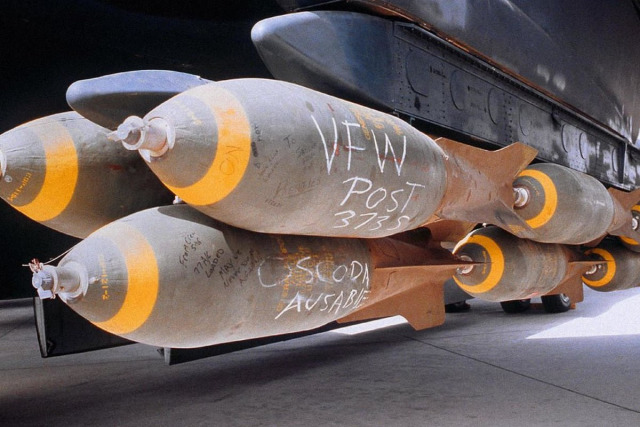Today, foreign armies are armed with numerous categories of conventional air-to-ground munitions (AGM). Many of them are currently being upgraded. At the same time, new, even more effective TSA are being developed. Consider a group of guided aerial bombs.
Guided aerial bombs
Aerial Bomb Targeting Kits
Despite the abundance of missiles in service, aerial bombs remain the main instrument of warfare. At the same time, uncontrolled gravitational [free fall] bombs have been largely replaced by high-precision products, as a result of which outdated gravitational ammunition is endowed with precision characteristics with the help of additional kits. These kits consist of a sensor and guidance system attached to the head of the so-called "unguided bomb" (dumb bomb), and a set of aerodynamic control surfaces attached to the body of the product.
One of the newest bomb guidance kits available is the modular air-to-ground (AASM) armament manufactured by Safran Electronics and Defense (France). Internationally, it is also known as the highly Efficient Modular Extended Range munition, or HAMMER (Highly Agile Modular Munition Extended Range). Introduced in 2007, the all-weather AASM is available in various bomb weight categories (from 125 kg to 1000 kg).
The modular system can be equipped with a set of guidance tools, including an inertial navigation system (INS)/global positioning system (GPS), INS/GPS/infrared (IR) or INS/GPS/semi-active laser (SAL). It is claimed that these various guidance system options make the HUMMER resistant to electronic interference and failure of the Global Navigation Satellite System (GNSS), as well as (when guided using SAL) allow it to destroy moving targets. According to Safran, current technological improvements continue to improve productivity, versatility and reliability in high-intensity joint operations.
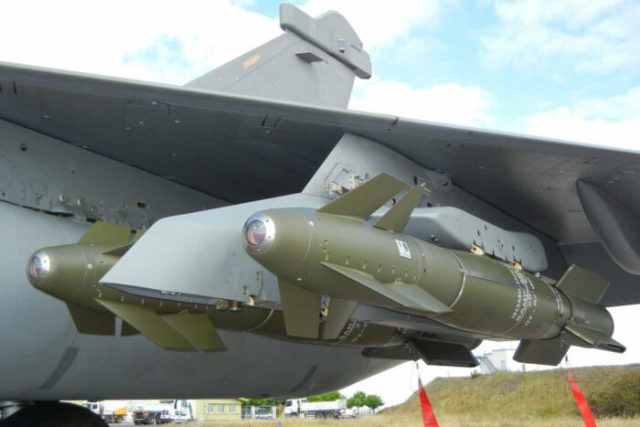
Guided aerial bombs AASM, or HAMMER on the Rafale fighter of the French Air Force
The integrated propulsion system of the kit provides a range of over 70 km. This indicator can be achieved from any application height, from high to very low. The shot-and-forget system allows the pilot to program and drop up to six bombs at the same time. Each bomb can be configured to explode in the air, shock or penetrating (delayed impact) detonation.
Tactical capabilities cover the entire range of tasks of tactical air-to-ground air weapons, including suppression or destruction of enemy air defense systems (SEAD/DEAD), close-range air support (CAS) and the defeat of stationary and moving targets. The AASM is fully integrated with the Dassault Rafale fighter, but Safran has developed an autonomous Hammer system (HASAS) that allows it to be installed on other aircraft models. The company also offers integration on light attack fighters as well as transport aircraft. According to Safran representatives, the HUMMER achieved 99% success in combat.
Ultra-high power aviation bombs
Very large bombs "for the destruction of bunkers" and zone action make up a small part of the arsenal of aviation weapons, but stand out due to their size and impressive results. The two most famous are the GBU-43B high-explosive heavy ammunition (Massive Ordnance Air Blast, MOAB) and the GBU-57A/B anti-bunker (Massive Ordnance Penetrator, MOP). They are operated exclusively by the US Air Force. In the West, they are considered the most powerful non-nuclear weapons in the world, designed for exceptional purposes.
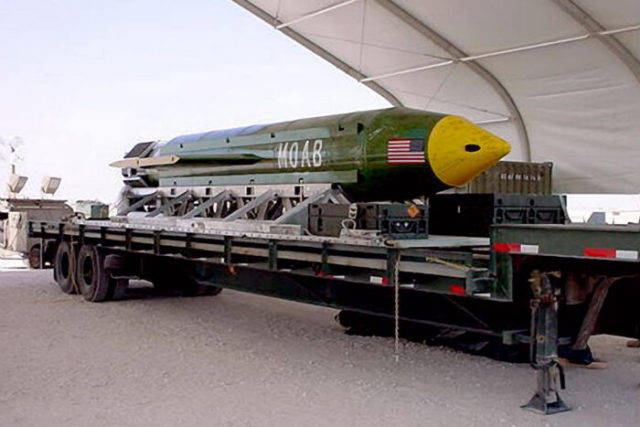
GBU-43B High Explosive Heavy Ammunition
The MOAB GPS-guided munition manufactured by Dynetics entered service in 2003. A total of 15 units were purchased. Only one was used, targeting a tunnel complex in Afghanistan in 2017. The 9 m long weapon weighs 9,800 kg and is used through the cargo ramp of the MS-130 aircraft. It is designed to detonate immediately before impact in order to defeat surface or near-surface targets of the "soft-medium" type. Although the effect of the explosion extends approximately 1,600 m from the crash site, the power of the weapon is also well manifested in confined environments where the energy of the explosion is directed, such as a complex of caves or tunnels.
GBU-57 Anti-bunker Guided Aerial Bomb
Unlike the MOAB, the MOP manufactured by Boeing is configured as a deep penetration weapon to defeat protected targets such as underground command posts or facilities for the production of weapons of mass destruction. The 14,000 kg munition was put into service in 2011 and is currently called the largest aviation bomb in the world by Western media. It can only be installed on a B-2 bomber .
The TSA has a warhead (warhead) weighing 2500 kg. The plastic-based explosive AFX-757 used in warheads was developed by the US Air Force Research Laboratory and has both higher explosion characteristics and greater stability than other high-explosive military explosives. The main penetrating effect is achieved due to the kinetic action of a very dense and hardened bomb body structure.
The US Air Force has acquired 20 units, none of which have yet been used in combat conditions. Since 2010, the Air Force has been developing the next generation penetrator (NPG). The service hopes to purchase weapons with comparable characteristics, but weighing about a third of the mass of the MOP.
Guided gliding bombs
A small diameter (caliber) bomb. At the opposite end of the size spectrum is the GBU-39B Small Diameter Bomb (SDB). The Boeing-made munition entered service in 2006. Currently, the US Air Force has 24 thousand units in service. Weighing only 114 kg and 1.8 m long, the SDB allows fighters and bombers to carry significantly more ammunition per sortie (up to 28 bombs per F-15E), accelerating the suppression of enemy forces and reducing the danger to the aircraft and crew.
The upgraded SDB GBU-53B II Stormbreaker ("Thunderbolt") is manufactured by Raytheon. The 93-kilogram Thunderbolt is equipped with a multi-mode designator that uses an IR channel, a millimeter-wave radar (MMW) and a SAL finder in addition to the original GPS/INS guidance system. All this combined makes it possible to accurately hit moving targets even with severely reduced visibility. The range of use of a guided aerial bomb on fixed targets is about 110 km and 72 km on moving targets. At the same time, the circular probable deviation (CVO) is within 1 m. The 48-kilogram warhead guarantees the defeat of armored and soft targets.
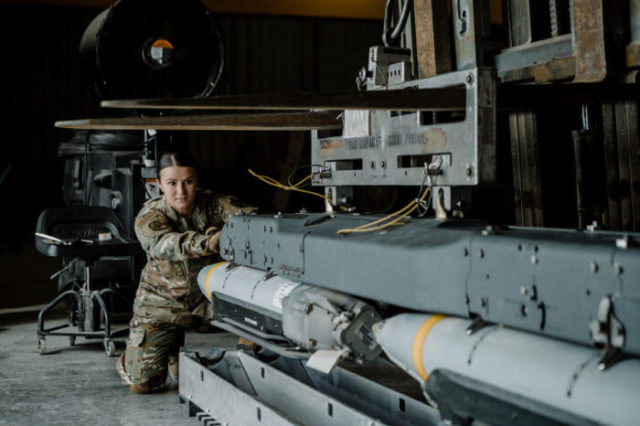
The BRU-61 bomb holder accommodates four small diameter bombs in a 2×2 configuration, which allows four bombs to be transported at one attachment point under the wing.
SmartGlider ("Smart glider"). Reflecting the need for an increasingly long range of destruction, MBDA is developing the SmartGlider family of TSA, which the manufacturer describes as "a new generation of air-to-ground tactical strike weapons for decades to come." To maximize the operational profile, which includes aerial interception, destruction of enemy air assets on the ground, CAS and SEAD/DEAD, SmartGlider is available in light and heavy versions.
This group of aviation weapons allows you to destroy fixed targets, including short- and medium-range network air defense systems. The lightweight version has a length of almost 2 m and a weight of 120 kg. It is equipped with an 80-kilogram multi-purpose warhead with a unitary charge. The MBDA Hexabomb Smart Launcher (HSL) allows fighters to carry 12-18 small "smart gliders" per mission to support saturation attacks on enemy air defenses, convoys or areas of concentration of forces. The heavy version has a length of 4 m and a weight of 1300 kg. It includes a warhead weighing 1000 kg, capable of providing a combined high penetrating and explosive effect on large and fortified targets.
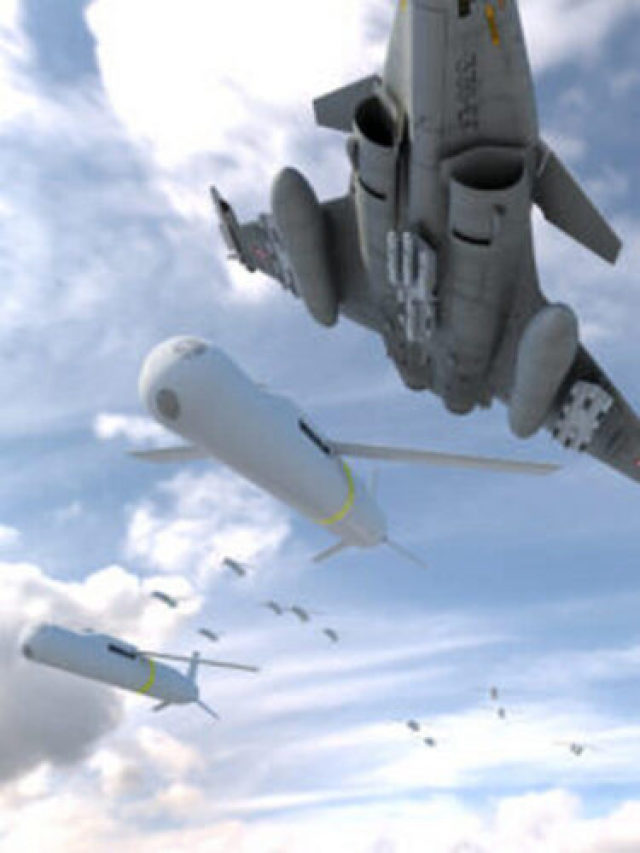
The Rafale fighter is capable of using a swarm of SmartGlider (MBDA concept image)
The SmartGlider family is based on the "shot-forgot" principle and combines INS/GNSS navigation with a multi-mode terminal guidance system, including low-light television (TV), IR and SAL homing. Radio frequency sensors, especially useful against air defense networks, are optional. The aircraft crew can update the target designation in flight via the data transmission channel. Available application effects include mid-air explosion, impact, and delayed detonation.
According to MBDA experts, when used from an altitude of about 12 km, both versions of the guided aerial bomb reach a range "much exceeding" 100 km. The SmartGlider does not use an engine as a planning munition. After the reset, the product opens two gliding wings, which provide a high ratio of lift to drag. Pitch and flight control are regulated by a triangular tail. The maneuverable glider can dodge obstacles and threats and adopt various angles of attack to facilitate accurate striking. MBDA introduced the SmartGlider concept at the 2017 Paris Air Show. It is expected that the light version will enter the army by 2025, followed by the heavy version.
To be continued…
Based on the materials of the resource euro-sd.com
